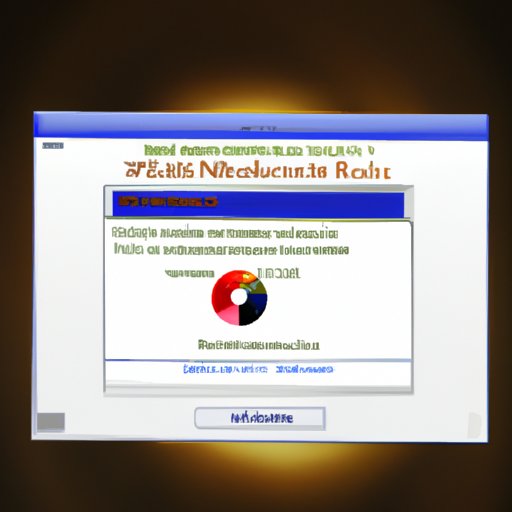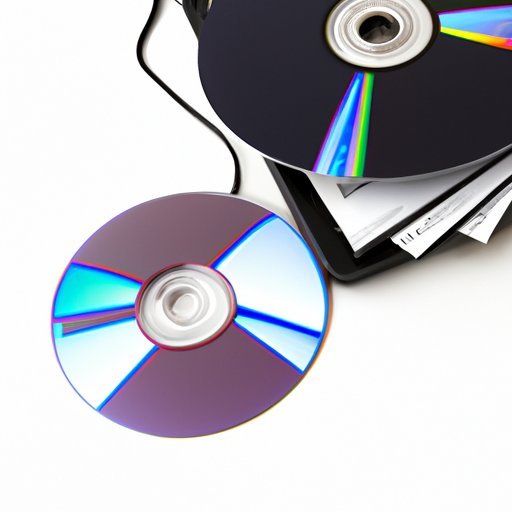Introduction
Upgrading to a new computer can be exciting, but it also comes with the challenge of transferring all your important files, programs, and settings over to the new machine. Fortunately, there are a few different methods you can use to make sure everything goes smoothly and your new computer is set up just the way you like it. In this article, we’ll explore the different ways to transfer data and programs to a new computer.
Definition of Data Transfer
Before we dive into the different methods, let’s define what we mean by “data transfer.” Data transfer is the process of copying files, programs, and settings from one computer to another. This includes everything from personal documents and photos to software applications and operating system configurations.
Overview of Problem
When you get a new computer, you want to make sure that all your important files, programs, and settings are transferred over without any issues. Unfortunately, this can be a tricky process, especially if you don’t know what you’re doing. The good news is that with the right approach, you can ensure that everything goes smoothly and your new computer is set up exactly the way you want it.
Using an External Hard Drive
One of the most common methods for transferring data and programs to a new computer is to use an external hard drive. An external hard drive is a device that connects to your computer via USB and allows you to store large amounts of data. It’s a great option for transferring data because it’s fast, easy to use, and relatively inexpensive.
Benefits of an External Hard Drive
There are several benefits to using an external hard drive to transfer data and programs:
- It’s fast. You can quickly copy files and programs from one computer to the other.
- It’s easy to use. All you need to do is connect the external hard drive to both computers and copy the files over.
- It’s inexpensive. External hard drives are relatively cheap, so you won’t have to spend a lot of money on the transfer.
Steps for Setting Up an External Hard Drive
The steps for setting up an external hard drive are fairly straightforward:
- Connect the external hard drive to your old computer.
- Copy the files and programs you want to transfer to the external hard drive.
- Disconnect the external hard drive from the old computer.
- Connect the external hard drive to your new computer.
- Copy the files and programs from the external hard drive to the new computer.
- Disconnect the external hard drive from the new computer.
Utilizing Cloud Storage Services
Another popular method for transferring data and programs to a new computer is to use cloud storage services such as Dropbox, Google Drive, and OneDrive. Cloud storage services allow you to store files and programs in the cloud, which makes it easy to access them from any computer or mobile device.
Advantages of Cloud Storage
There are several advantages to using cloud storage services to transfer data and programs:
- It’s convenient. You can access your files and programs from any device with an internet connection.
- It’s secure. Your data is encrypted and stored securely in the cloud.
- It’s reliable. Cloud storage services are reliable and rarely experience downtime.
Steps for Using Cloud Storage
The steps for using cloud storage services are fairly straightforward:
- Sign up for a cloud storage service such as Dropbox, Google Drive, or OneDrive.
- Download the cloud storage app to your old computer.
- Upload the files and programs you want to transfer to the cloud.
- Download the cloud storage app to your new computer.
- Download the files and programs from the cloud to your new computer.
Transferring Data via Network
If you have two computers that are connected to the same network, you can use network file sharing to transfer data and programs. Network file sharing allows you to access files and programs stored on one computer from another computer on the same network.
Advantages of Network Transfer
There are several advantages to using network file sharing to transfer data and programs:
- It’s fast. Network file sharing is faster than transferring data via USB or cloud storage.
- It’s secure. Network transfers are secure and encrypted.
- It’s easy to use. Setting up network file sharing is straightforward and doesn’t require any special knowledge.
Steps for Transferring Data via Network
The steps for transferring data via network are as follows:
- Connect both computers to the same network.
- Enable network file sharing on both computers.
- On the old computer, select the files and programs you want to transfer.
- On the new computer, open the network file sharing window and browse for the files and programs on the old computer.
- Select the files and programs you want to transfer and copy them to the new computer.
- Disable network file sharing on both computers.

Installing Software from Original Media
If you’re transferring programs to your new computer, you may want to consider installing them from the original media. Installing programs from the original media (CDs or DVDs) ensures that the program is installed correctly and works properly on the new computer.
Benefits of Installing from Original Media
There are several benefits to installing software from the original media:
- It’s reliable. Installing from the original media ensures that the program is installed correctly and works properly.
- It’s secure. Installing from the original media is more secure than downloading software from the internet.
- It’s easy. Installing from the original media is a straightforward process that doesn’t require any special knowledge.
Steps for Installing Software from Original Media
The steps for installing software from original media are as follows:
- Insert the CD or DVD containing the software into the CD/DVD drive of the new computer.
- Follow the on-screen instructions to install the software.
- Once the installation is complete, remove the CD or DVD from the CD/DVD drive.
Cloning Your Old Computer’s Hard Drive
If you want to make sure that your new computer is set up exactly the same as your old one, you can clone your old computer’s hard drive. Cloning involves copying all the data from one hard drive to another, so that the new hard drive is an exact duplicate of the old one.
Benefits of Cloning
There are several benefits to cloning your old computer’s hard drive:
- It’s fast. Cloning is a quick process that can be done in minutes.
- It’s comprehensive. Cloning copies all the data from the old hard drive, including programs and settings.
- It’s easy. Cloning only requires a few simple steps and doesn’t require any special knowledge.
Steps for Cloning Your Old Computer’s Hard Drive
The steps for cloning your old computer’s hard drive are as follows:
- Connect the new hard drive to the old computer.
- Download and install a disk cloning software such as EaseUS Todo Backup.
- Run the disk cloning software and follow the on-screen instructions to clone the old hard drive to the new one.
- Once the cloning process is complete, disconnect the new hard drive from the old computer.
- Install the new hard drive in the new computer.

Backing Up Data to CDs or DVDs
If you only need to transfer a few files or programs to your new computer, you may want to consider backing them up to CDs or DVDs. Backing up data to CDs or DVDs is a simple and inexpensive way to transfer small amounts of data.
Advantages of Backing Up Data to CDs or DVDs
There are several advantages to backing up data to CDs or DVDs:
- It’s inexpensive. CDs and DVDs are relatively cheap, so you won’t have to spend a lot of money on the transfer.
- It’s secure. Data stored on CDs and DVDs is secure and unlikely to be lost or corrupted.
- It’s easy. Burning data to CDs or DVDs is a straightforward process that doesn’t require any special knowledge.
Steps for Backing Up Data to CDs or DVDs
The steps for backing up data to CDs or DVDs are as follows:
- Insert a blank CD or DVD into the CD/DVD drive of the old computer.
- Open the Windows Disc Image Burner and select the files and programs you want to back up.
- Follow the on-screen instructions to burn the files and programs to the CD or DVD.
- Once the burning process is complete, remove the CD or DVD from the CD/DVD drive.
- Insert the CD or DVD into the CD/DVD drive of the new computer.
- Follow the on-screen instructions to copy the files and programs from the CD or DVD to the new computer.
Conclusion
Transferring data and programs to a new computer can be a challenging process, but with the right approach, you can ensure that everything goes smoothly. In this article, we’ve explored the different ways to transfer data and programs to a new computer, including using an external hard drive, cloud storage services, networks, original media, cloning, and CDs or DVDs. We hope this article has given you the information you need to successfully transfer data and programs to your new computer.
Summary of Different Ways to Transfer Data and Programs
In this article, we’ve explored the different ways to transfer data and programs to a new computer, including using an external hard drive, cloud storage services, networks, original media, cloning, and CDs or DVDs.
Suggestions for Best Practices
When transferring data and programs to a new computer, it’s important to follow best practices. Make sure to take regular backups of your data, use secure methods for transferring data, and always install programs from the original media.
Final Thoughts
Transferring data and programs to a new computer doesn’t have to be a daunting task. With the right approach, you can ensure that everything goes smoothly and your new computer is set up exactly the way you want it.
(Note: Is this article not meeting your expectations? Do you have knowledge or insights to share? Unlock new opportunities and expand your reach by joining our authors team. Click Registration to join us and share your expertise with our readers.)
